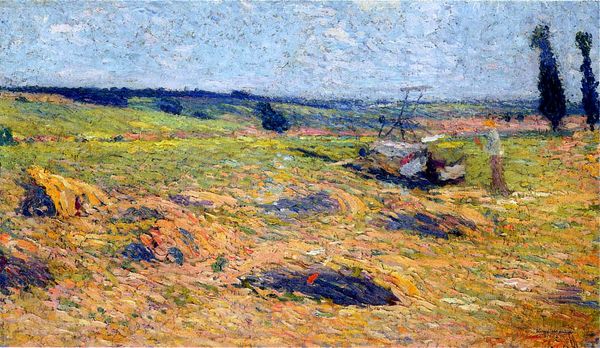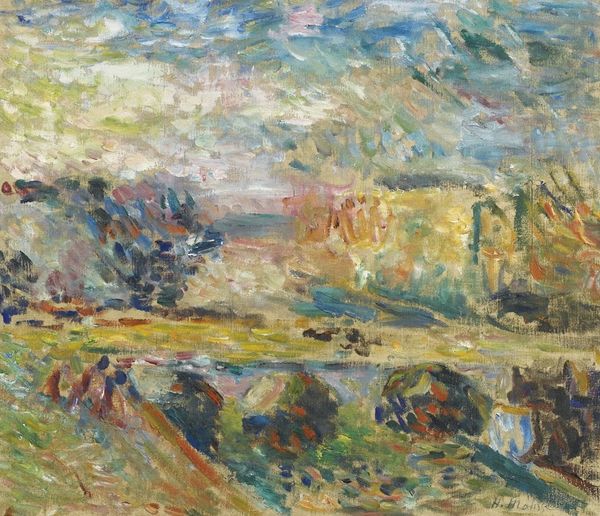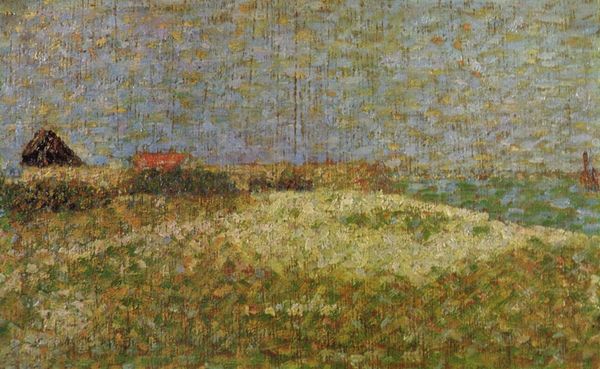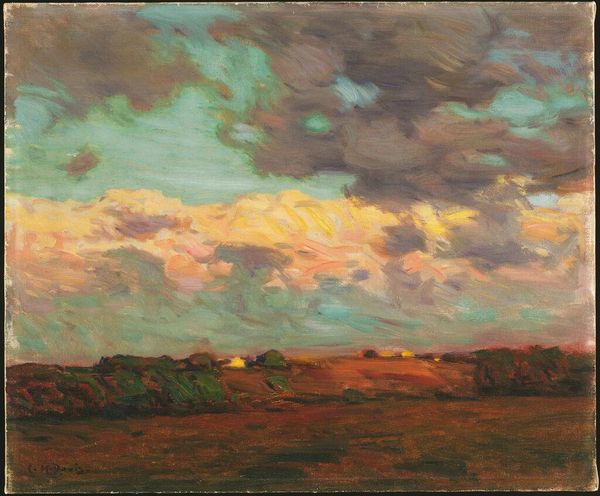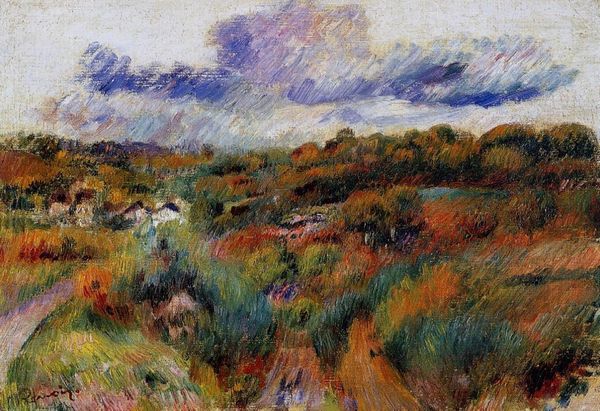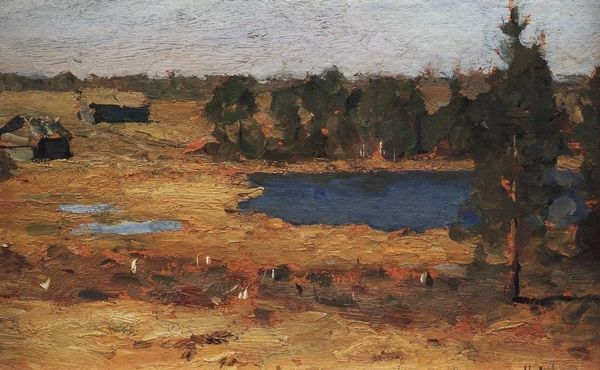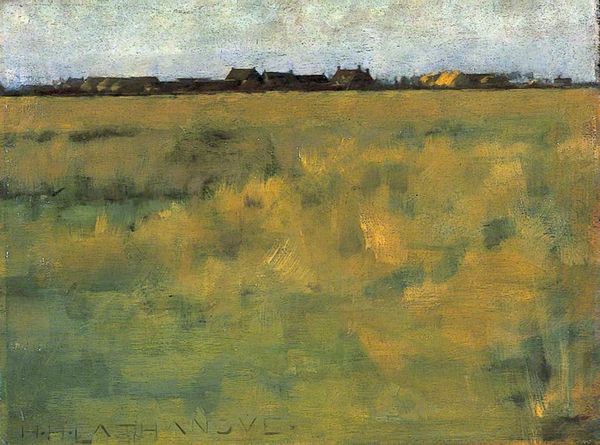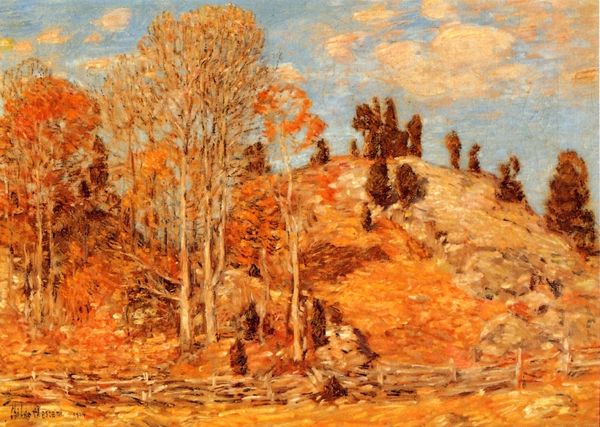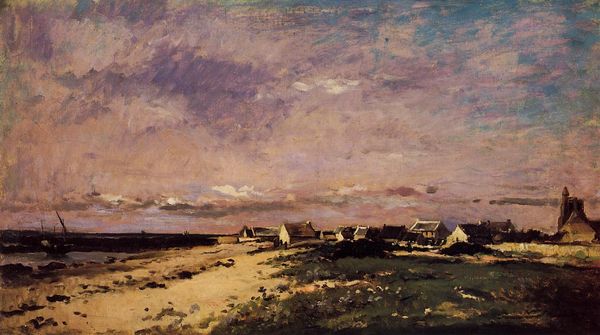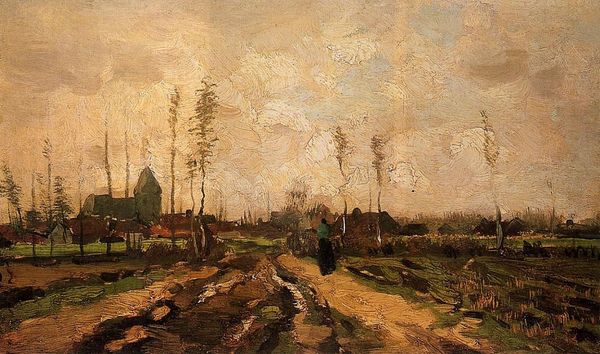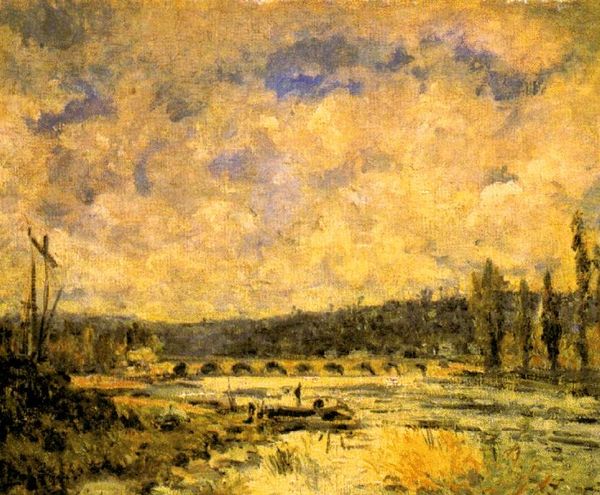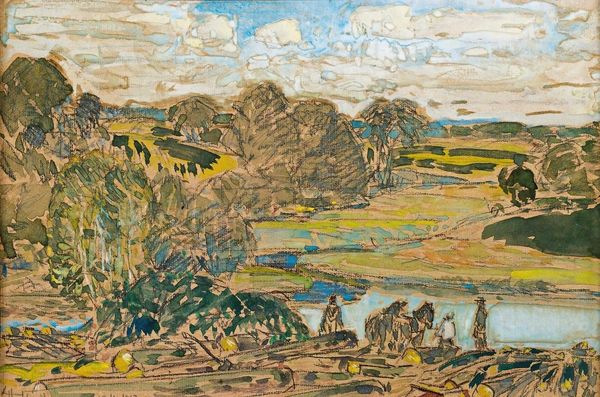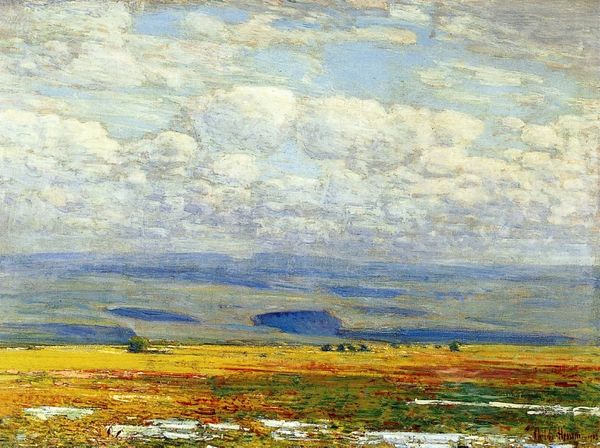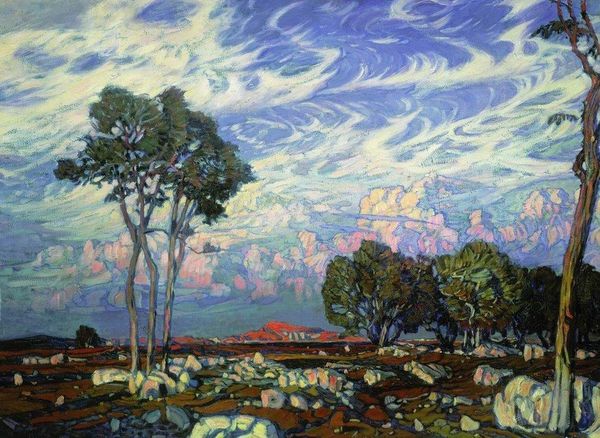
painting, oil-paint, impasto
#
painting
#
oil-paint
#
landscape
#
impressionist landscape
#
oil painting
#
impasto
#
symbolism
#
cityscape
#
post-impressionism
Copyright: Public domain
Editor: Levitan's "Landscape with a Convent," painted in 1895 with oil paint, has a very striking, almost melancholic, feel to it. The buildings seem to blend into the landscape. How do you interpret this work, looking at its context and construction? Curator: I see a very deliberate exploration of labor and materiality here. Consider the impasto technique; each visible brushstroke is evidence of the artist's hand, of physical labor. Levitan is not just depicting a landscape; he’s highlighting the *process* of making, isn't he? And then we have the convent itself... Editor: Yes, the convent. It feels less like a spiritual center and more… integrated into the mundane world. Curator: Precisely! And this is where the social context comes into play. Religious institutions at this time held significant power, owning vast amounts of land and influencing the lives of ordinary people. Levitan’s choice to visually assimilate the convent into the landscape can be read as a subtle critique of that power, no? He deconstructs the visual hierarchy, presenting the religious structure as simply another element within the means of artistic production – in this case, a landscape painting produced for profit. Editor: That’s a fascinating way to read it, seeing the convent itself as another kind of… resource or material within the artwork's production. I never considered that before. Curator: And how does the consumption of such an artwork further that idea, do you think? Editor: Well, the painting becomes a commodity itself, distanced from the labour involved. The viewer buys a beautiful scene, perhaps unaware of the commentary embedded within the brushstrokes. Curator: Exactly! We are all part of the artistic system that shapes how we view art. I'm glad we peeled away some layers. Editor: This conversation really opened my eyes to looking beyond the surface and thinking about the process. Thanks for sharing this with me!
Comments
No comments
Be the first to comment and join the conversation on the ultimate creative platform.
